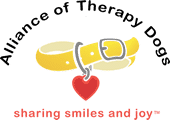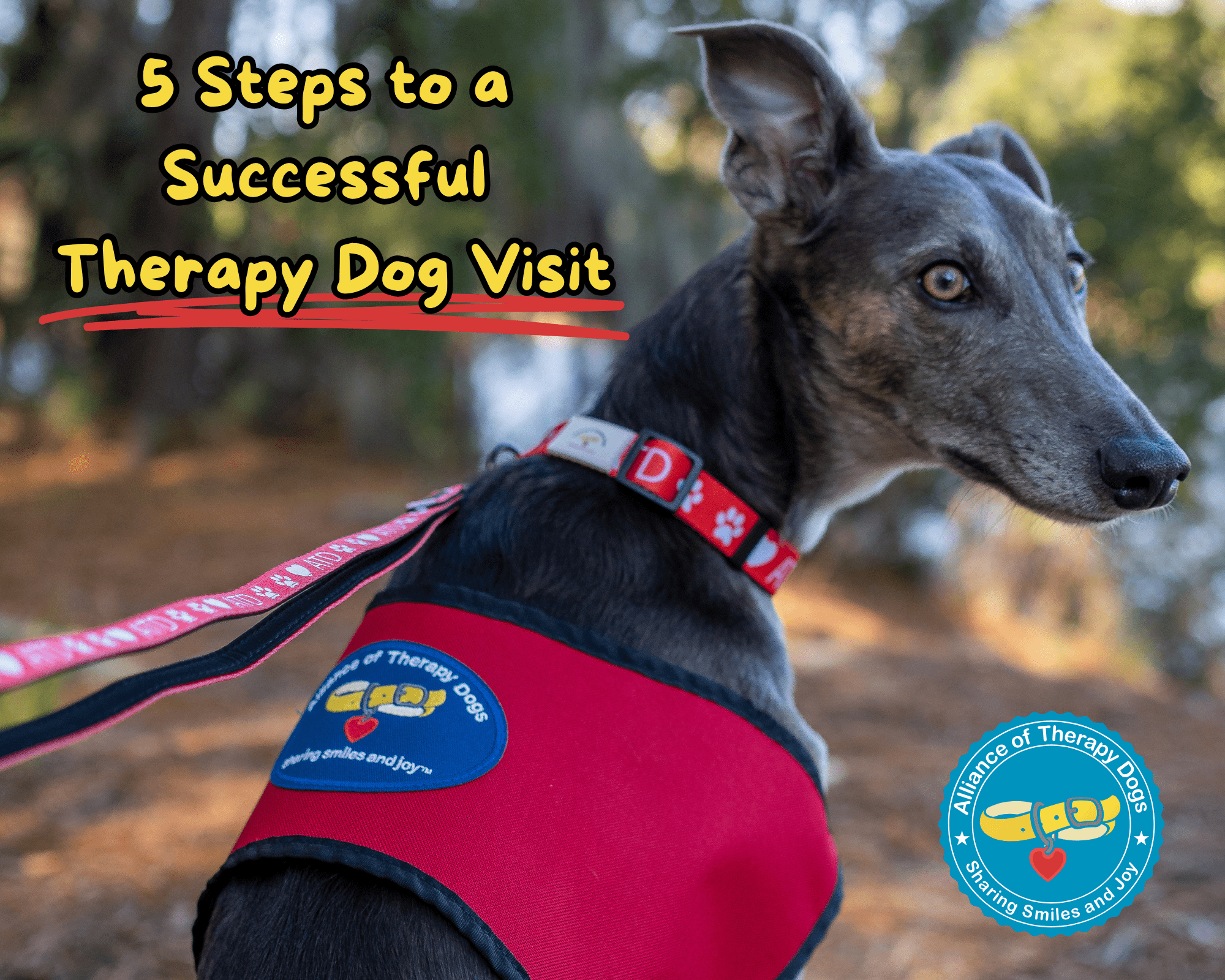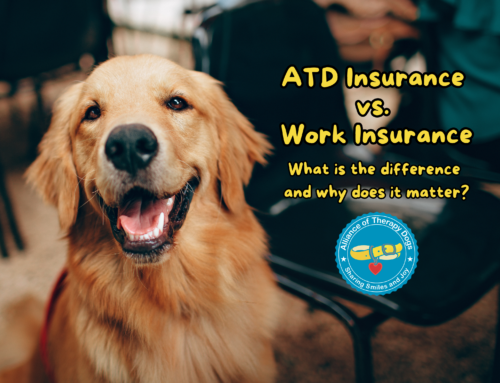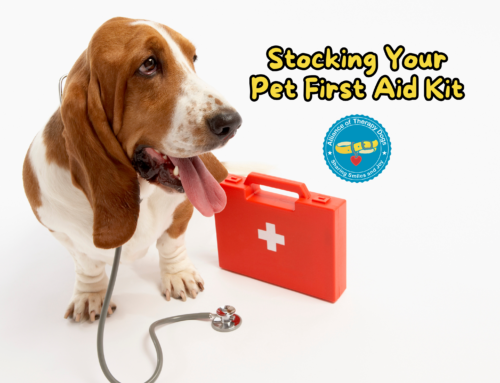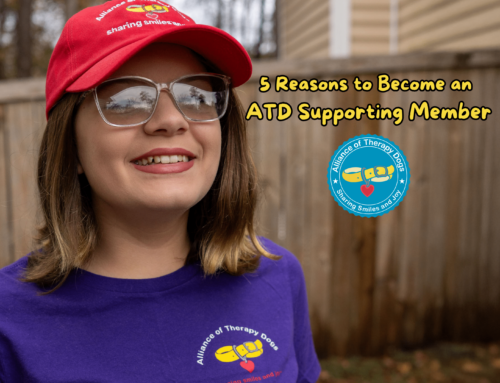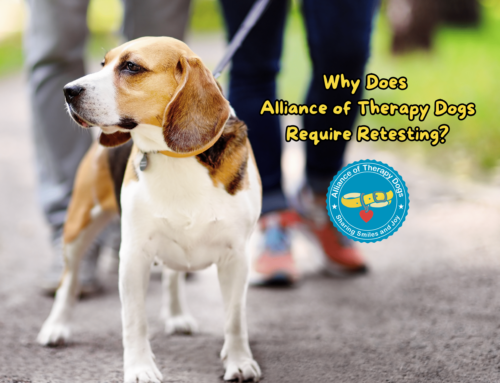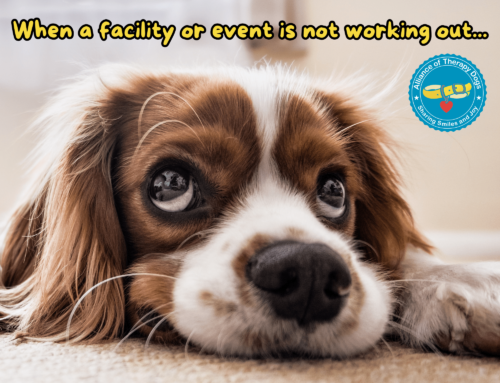A Successful Therapy Dog Visit Starts with You!
Therapy dog visits can be a great way to brighten someone’s day. The magical effect dogs have on humans is undeniable, but we cannot forget about the other end of the leash. The handler is a big part of a successful therapy dog visit. In order for therapy dogs to do their job well, it is important that handlers are prepared and proactive. Here are 5 steps to having a successful therapy dog visit:
- Establish a Routine
Both dogs and humans do well with routine. This also applies to therapy dog visits. Alliance of Therapy Dogs (ATD) requires ATD teams to make and log at least 1 volunteer visit every 3 months in their ATD Portal. By making and logging frequent visits, your dog stays active and knows what to expect. When your dog knows what to expect on visits, they will be more comfortable and engaged with those they are visiting.
- Bring Your Required Gear
Make sure you are prepared for your visit by bringing the required gear. ATD requires Members to have the following gear while on a visit: a 4-foot (or shorter) leash, a red heart tag, and your dog’s current vet records. The red heart tag can be attached to a collar, a harness, or the leash. By making sure your gear is ATD approved, you will not have to worry whether your visit is covered under ATD insurance or not.
- Know Your Environment
Therapy dog visits are always changing and this is why it is important to stay alert and proactive. At the end of the day, our therapy dogs are still animals, and it only takes a split second for something to happen. It can be easy to get caught up in routines and become complacent. Maintaining control of our dog’s head is one of the most important parts of keeping everyone safe on a therapy dog visit. There is no such thing as a bombproof dog.
- Watch Your Dog’s Body Language
One of the most important parts of a successful therapy dog visit is knowing your dog’s body language. As your dog’s advocate, they should always be your first priority on a therapy dog visit. If your dog looks uncomfortable, it is important that you remove them from the situation. Sometimes this may mean telling someone they cannot pet your dog at the moment.
Signs of stress may look a little different in every dog. It is important to learn how your dog communicates these feelings to you. Our goal, as successful therapy dog handlers, is to be proactive and catch stressful situations before they occur. This builds our dog’s trust in us as handlers.
- Know Your ATD Member Handbook
Facilities require teams to be certified because of insurance coverage. ATD provides a $5 million liability policy while on volunteer visits. However, teams are only covered by this policy if they are following the rules set forth by ATD and their insurance company. This is why it is important to stay up to date on ATD Rules and Regulations and make sure you are following them while on facility property. ATD provides a physical handbook every year to their teams around November and you can also find the ATD Handbook on the ATD website.
These 5 steps will help you and your dog continue bringing smiles and joy to those you visit. Establishing a routine, making sure you are bringing the required gear, and knowing your ATD Member Handbook Rules and Regulations are a big part of being a successful therapy dog team. When you stay proactive, control your dog’s head, and follow your dog’s body language, you will keep those you visit and your dog safe. If you ever have a question about a specific rule, the ATD Office is always willing to answer any questions you may have. The ATD Office can be reached at 307-432-0272 or Office@therapydogs.com.
